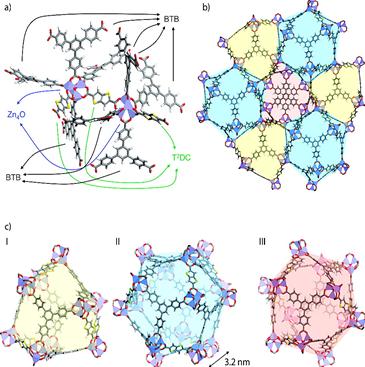New Material Breaks Surface-Area Record
A new nanoporous material has a surface area higher than was thought to be physically possible. A few years ago researchers had calculated that 3,000 square meters per gram was the upper limit, but soon after, materials got up to about 4,000 square meters per gram. The record-breaking material, developed by materials scientists at the University of Michigan, has 5,200 square meters per gram. (A National Football League regulation field measures about 5,351 square meters.)
High-surface-area materials are important for catalysis, water filtration, fuel cleaning, and hydrogen storage. The new material is what’s called a metal-organic framework. It consists of a network of zinc oxide groups held together by hydrocarbon struts. It’s a higher surface-area version of previously developed material that’s very good at storing hydrogen. But the boost to surface area didn’t boost hydrogen storage, suggesting that other factors need to be investigated. This work, led by University of Michigan chemistry professor Adam Matzger, is described online in the Journal of the American Chemical Society.

Keep Reading
Most Popular
Large language models can do jaw-dropping things. But nobody knows exactly why.
And that's a problem. Figuring it out is one of the biggest scientific puzzles of our time and a crucial step towards controlling more powerful future models.
How scientists traced a mysterious covid case back to six toilets
When wastewater surveillance turns into a hunt for a single infected individual, the ethics get tricky.
The problem with plug-in hybrids? Their drivers.
Plug-in hybrids are often sold as a transition to EVs, but new data from Europe shows we’re still underestimating the emissions they produce.
Google DeepMind’s new generative model makes Super Mario–like games from scratch
Genie learns how to control games by watching hours and hours of video. It could help train next-gen robots too.
Stay connected
Get the latest updates from
MIT Technology Review
Discover special offers, top stories, upcoming events, and more.